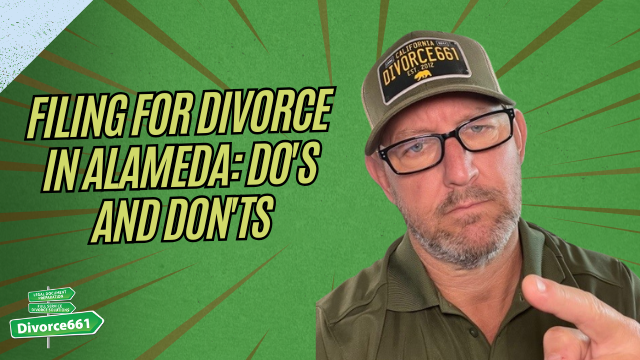Filing for Divorce in Alameda: Do’s and Don’ts
I’m Tim Blankenship from Divorce661. If you’re filing for divorce in Alameda County, here’s what you need to know to avoid the delays and frustration that come from simple paperwork mistakes. I’ve helped many couples move through the process quickly by focusing on what the court actually requires — and what it will reject.
Why paperwork matters in Alameda County
Filing for divorce isn’t just about completing forms — it’s about understanding local court rules and electronic filing requirements. In Alameda County, all divorce documents must be submitted electronically. Paper filings are not accepted, and improperly formatted or incomplete forms will be rejected.
Too many people assume the court will fix their errors or tell them exactly what’s missing. In reality, rejected forms often come back with little or no explanation, which leaves you guessing and losing time.
Common mistakes that derail divorce cases
- Submitting paper forms instead of e-filing — Alameda County requires electronic submission.
- Incomplete or improperly formatted forms — missing pages, sections left blank, or outdated templates will be rejected.
- Outdated forms — using an old version of a form can lead to refusal to file.
- Missing essential documents — petition, summons, disclosures, and income declarations are the foundation of your case.
- Relying on the court to correct mistakes — courts typically return forms without fixing errors for you.
Real example: one missing form, major delay
One client thought their final judgment was ready — only to find out it had been silently rejected because an income declaration was missing. Once we identified and added the missing form, the court approved the judgment within days. That quick turnaround shows how a single accurate correction, submitted properly, can prevent months of unnecessary delay.
What forms matter most
- Petition — starts the case and outlines what you are asking the court to do.
- Summons — notifies the other party and sets timelines.
- Initial disclosures — financial information both parties must exchange.
- Income and expense declarations — required when financial issues or support are involved.
- Final judgment documents — must be complete and compliant for the court to enter judgment.
How to avoid rejections and speed up your case
- Learn and follow Alameda County’s local rules — e-filing is mandatory.
- Use current, court-approved form versions.
- Double-check every form for completeness before you submit.
- Keep a checklist: petition, summons, disclosures, income declarations, and any county-specific attachments.
- When in doubt, get a second set of eyes — a professional can spot missing items that cause rejections.
How Divorce661 helps
At Divorce661, we handle the entire process to make sure your case moves forward smoothly. Our services include:
- Preparing court-compliant documents
- E-filing everything correctly with Alameda County
- Ensuring all necessary disclosures and income declarations are included
- Managing the case from initial filing through final judgment
- Helping clients complete uncontested divorces with no court appearances when possible
If you want to avoid the headaches of a DIY filing and costly delays, we offer a free consultation to review your situation and explain the next steps. Visit Divorce661.com to schedule your free consultation and learn how we can get your Alameda divorce done right the first time.
Conclusion
Filing for divorce in Alameda County can be straightforward — if you know the local rules and avoid common mistakes. E-filing only, complete and current forms, and the right checklist will save you time and stress. If you’d rather not risk delays, let us handle the paperwork and filing so your case moves forward without surprises.
Ready to file the right way? Visit Divorce661.com to schedule your free consultation and get expert assistance from start to finish.

